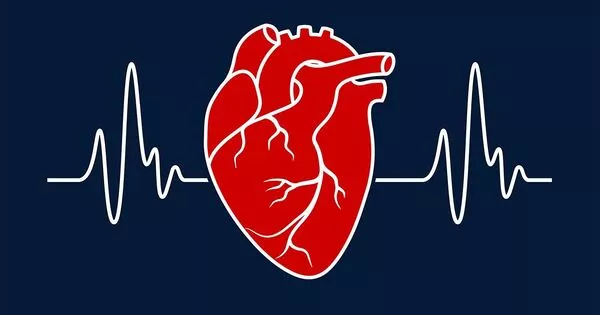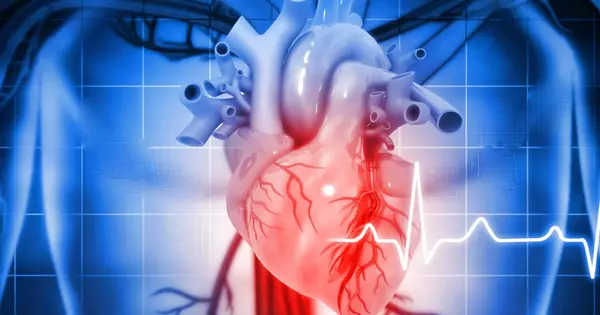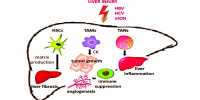Coronary Artery Disease (CAD) is a condition in which the coronary arteries, the blood vessels that supply oxygen and blood to the heart muscle, become narrowed or blocked. This can lead to chest pain, heart attack, or other symptoms. Congestive Heart Failure (CHF) is a condition in which the heart is unable to pump enough blood to meet the body’s needs. This can lead to fluid buildup in the body, shortness of breath, and fatigue. Both CAD and CHF can be caused by a variety of factors, including genetics, lifestyle factors, and other underlying medical conditions.
Two new Cedars-Sinai research studies advance prediction of two critical heart conditions: sudden cardiac arrest, which is often fatal, and increased coronary artery calcium, a marker of coronary artery disease that can lead to a heart attack. The research was led by Cedars-Smidt Sinai’s Heart Institute and the medical center’s Division of Artificial Intelligence in Medicine (AIM).
The cardiac arrest study, which was published in the peer-reviewed journal Heart Rhythm, identified a panel of novel blood biomarkers that are specifically associated with sudden cardiac arrest. These biomarkers have the potential to improve clinical prediction of sudden cardiac arrest, a potentially fatal condition that made headlines earlier this month when NFL player Damar Hamlin collapsed during a game.
When cases were compared to controls, we identified a total of 26 protein biomarkers associated with sudden cardiac arrest, of which 20 distinguished sudden cardiac arrest from coronary artery disease.
Faye Norby
Sudden cardiac arrest is the sudden loss of heartbeat and affects more than 350,000 in the United States annually. Despite an organized emergency medical response system, fewer than 10% of individuals who have a cardiac arrest will survive.
“The dismal survival rates for sudden cardiac arrest exemplify the need for the risk determination, early prediction, and improved primary prevention,” said Sumeet Chugh, MD, senior author of the study, professor, and director of both the Heart Rhythm Center and the Division of AIM.
Chugh, who is also the director of Cedars-Center Sinai’s for Cardiac Arrest Prevention, has spent his career researching sudden cardiac arrest. His research has resulted in novel methods for predicting sudden cardiac arrest, which is currently being tested with the goal of implementing them in clinical care.
Researchers analyzed a large number of blood biomarkers obtained from survivors of sudden cardiac arrest in this study, which was conducted in collaboration with the Van Eyk Laboratory at Cedars-Sinai, comparing results from one cohort of people without coronary artery disease and one cohort with the disease.

“When cases were compared to controls, we identified a total of 26 protein biomarkers associated with sudden cardiac arrest, of which 20 distinguished sudden cardiac arrest from coronary artery disease,” said Faye Norby, PhD, a research scientist at the Smidt Heart Institute and the study’s first author. “While these biomarkers have the potential to improve prediction of sudden cardiac arrest,” the researchers write, “further research is needed to replicate these findings in a larger group of patients.”
The coronary artery calcium study, published in the Journal of the American Society of Echocardiography, shows for the first time that an ultrasound image of the heart can be “read” by an artificial intelligence algorithm to accurately identify whether a patient has a large amount of buildup in their coronary arteries.
Traditionally, coronary artery calcium buildup is diagnosed using CT scans, which are not available at every center, expose patients to radiation, and are costly. On the other hand, heart ultrasounds — also called echocardiograms — can be done in a clinic or doctor’s office, do not produce radiation, and tend to be much less expensive.
“We show that echocardiograms can predict coronary artery calcium and heart attack risk nearly as well as CT scans when interpreted with our AI software,” said senior author David Ouyang, MD, a cardiologist in the Smidt Heart Institute’s Department of Cardiology and a researcher in the Division of AIM. “This was true even when an expert reader’s naked eye saw the ultrasound image of the heart as appearing fairly normal.”
Researchers trained a video-based artificial intelligence tool to predict coronary artery calcium scores using a dataset of 2,881 echocardiogram images. Scores range from zero – representing a “perfect” score with no indication of coronary artery calcium buildup – to more than 2,000, a poor prognosis for individuals, representing high risk of heart attack and coronary artery disease.
The video-based deep learning model correctly predicted zero scores in patients with good health as well as high coronary calcium scores, indicating a poor future prognosis.
Ouyang and his colleagues hope that this efficient technology, which includes a coronary artery calcium score for each patient, will be used in all echocardiogram laboratories. According to Ouyang, this type of resource “will enable faster, potentially more frequent, and generally more cost-effective imaging that provides clinically valuable, predictive information.”















